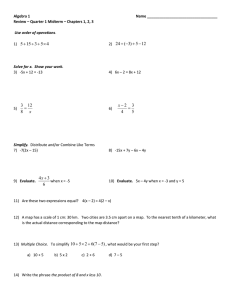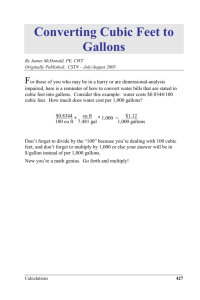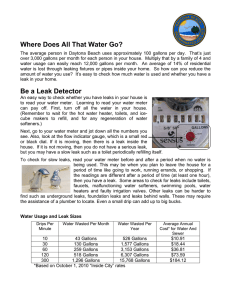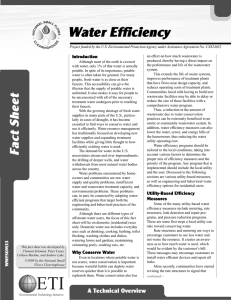AWPPCE Bill Bardin Homework 8.4
advertisement
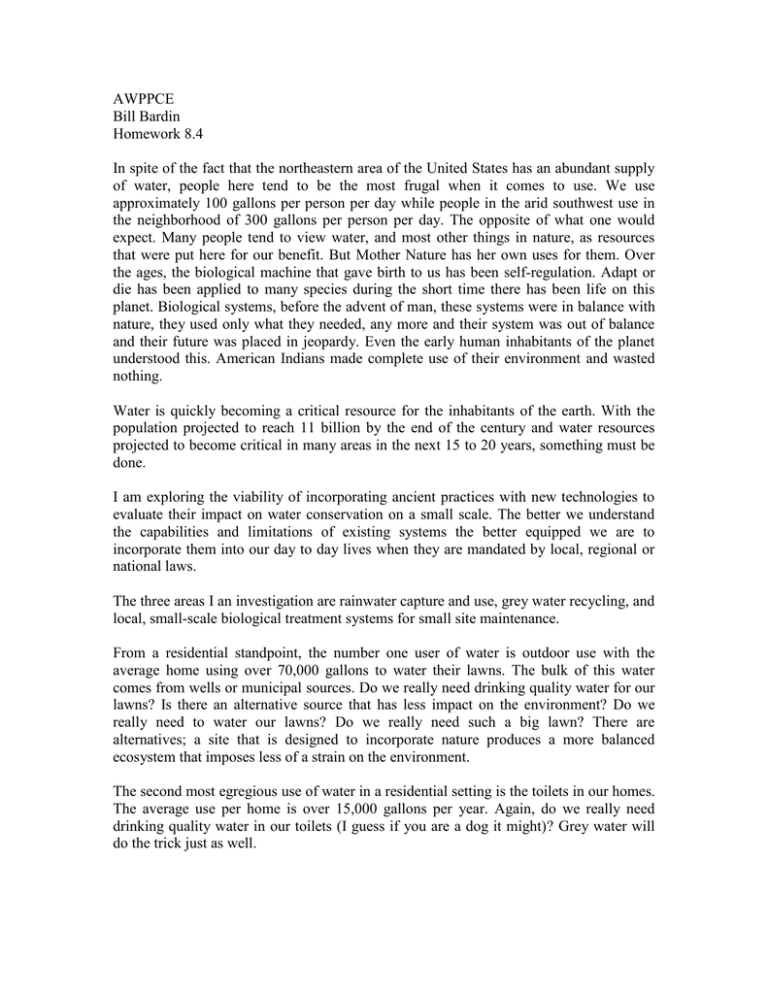
AWPPCE Bill Bardin Homework 8.4 In spite of the fact that the northeastern area of the United States has an abundant supply of water, people here tend to be the most frugal when it comes to use. We use approximately 100 gallons per person per day while people in the arid southwest use in the neighborhood of 300 gallons per person per day. The opposite of what one would expect. Many people tend to view water, and most other things in nature, as resources that were put here for our benefit. But Mother Nature has her own uses for them. Over the ages, the biological machine that gave birth to us has been self-regulation. Adapt or die has been applied to many species during the short time there has been life on this planet. Biological systems, before the advent of man, these systems were in balance with nature, they used only what they needed, any more and their system was out of balance and their future was placed in jeopardy. Even the early human inhabitants of the planet understood this. American Indians made complete use of their environment and wasted nothing. Water is quickly becoming a critical resource for the inhabitants of the earth. With the population projected to reach 11 billion by the end of the century and water resources projected to become critical in many areas in the next 15 to 20 years, something must be done. I am exploring the viability of incorporating ancient practices with new technologies to evaluate their impact on water conservation on a small scale. The better we understand the capabilities and limitations of existing systems the better equipped we are to incorporate them into our day to day lives when they are mandated by local, regional or national laws. The three areas I an investigation are rainwater capture and use, grey water recycling, and local, small-scale biological treatment systems for small site maintenance. From a residential standpoint, the number one user of water is outdoor use with the average home using over 70,000 gallons to water their lawns. The bulk of this water comes from wells or municipal sources. Do we really need drinking quality water for our lawns? Is there an alternative source that has less impact on the environment? Do we really need to water our lawns? Do we really need such a big lawn? There are alternatives; a site that is designed to incorporate nature produces a more balanced ecosystem that imposes less of a strain on the environment. The second most egregious use of water in a residential setting is the toilets in our homes. The average use per home is over 15,000 gallons per year. Again, do we really need drinking quality water in our toilets (I guess if you are a dog it might)? Grey water will do the trick just as well. Number three on the list is the clothes washer, almost 12,500 gallons per year in each of the nearly 132 million homes in the US. Combine that with the fact that 85 to 90 percent of the detergent used in them goes down the drain and into our ecosystem. I am looking at a detailed evaluation of the potential savings by incorporating many of these systems, a little common sense, and some social engineering to determine the viability of each.




